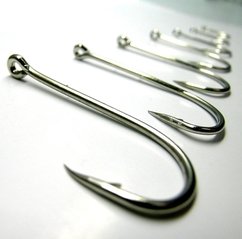When giving a presentation it is important to make your audience really want to listen to what you have to say. Otherwise, they will remain very passive listeners switching on and off throughout. Therefore, grab their attention right at the start by giving them a “hook’ to convert them into active listeners.
Here are our top ten attention grabbing tips for presentations:
1. Opportunity
An opportunity to make money or become the market leader.
2. Fear
The consequences of not taking action e.g. lose customers or falling behind their competitors.
3. Curiosity
Build some intrigue into the opening to arouse their curiosity e.g. “There are many issues overlooked which are potential deal breakers. So, we are going to address these issues too”.
4. Shock treatment
A powerful opening statement to startle the audience. This could be contradicted or dispelled later e.g. “We are losing money”. This should be followed by a pause for impact.
5. Killer fact
A powerful fact or statistic e.g. 80% of problems occur due to miscalculation. This product guarantees accuracy. Remember to use the pause.
6. Scenario
Get your audience to imagine a hypothetical situation and think about how they would tackle it.
7. Analogy
Draw comparisons with your content and something the audience can relate to e.g. giving presentations is a bit like driving a car; you need to practice before you can do them without thinking. They are particularly good for technical presentations. It aids understanding especially for a non-technical audience.
8. Need to know
When giving an informative presentation simply spell out to your audience why they need to know the information you are giving them or the consequences of not being up to date with the latest facts.
9. Empathy
Demonstrate early on that you understand the audience’s needs, problems and concerns. Ensure that your delivery is authentic.
10. Rhetorical question
Use a powerful rhetorical question to engage your audience e.g. “Before you start thinking about relaxing in the sun when you retire, ask yourself this key question – will you be able to afford it?” This can be followed by, “The purpose of this presentation is to show you how you can”.
